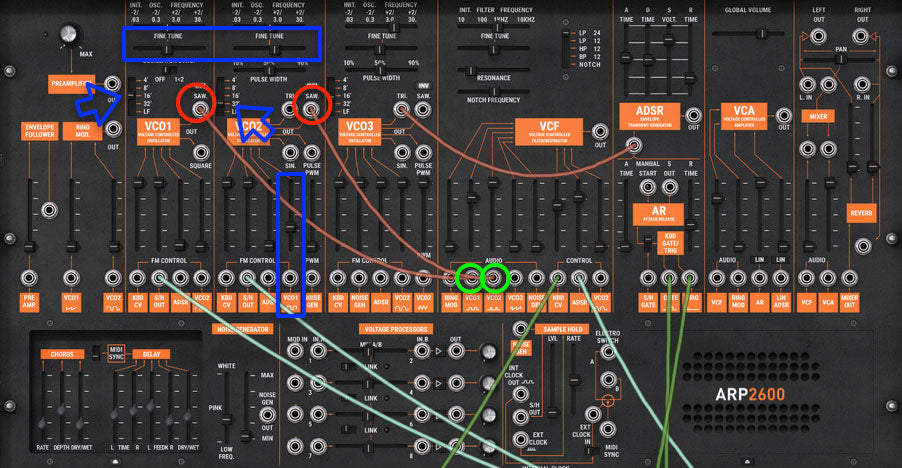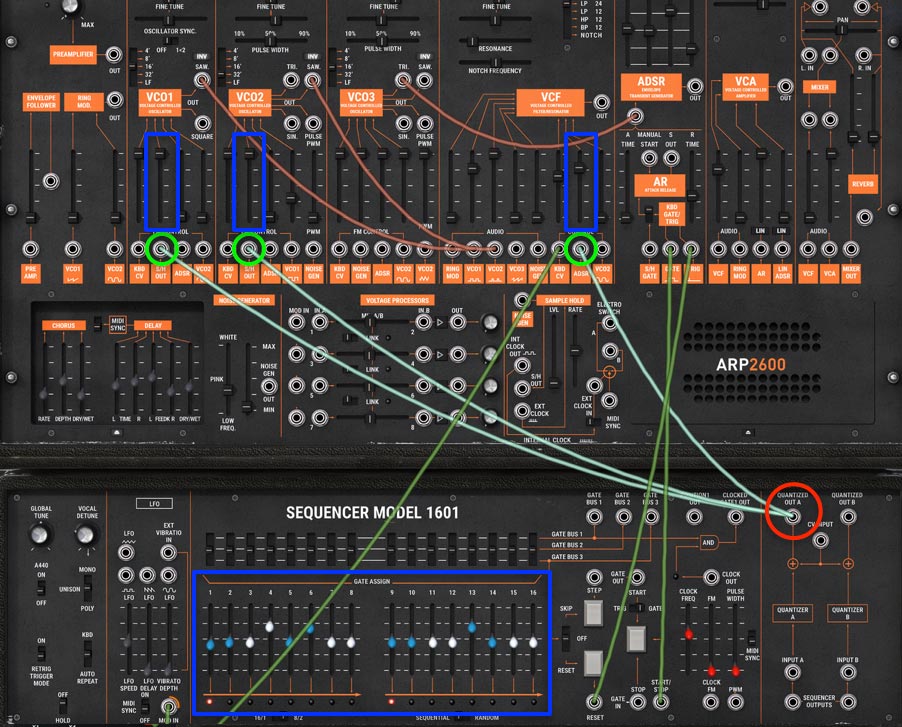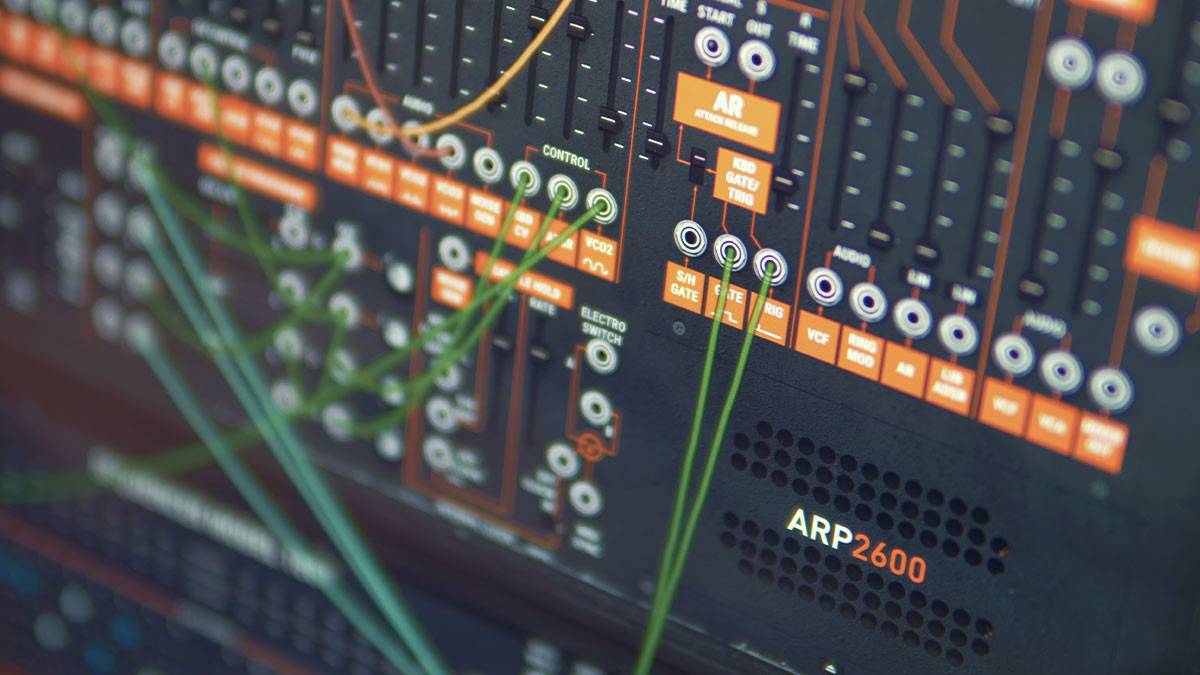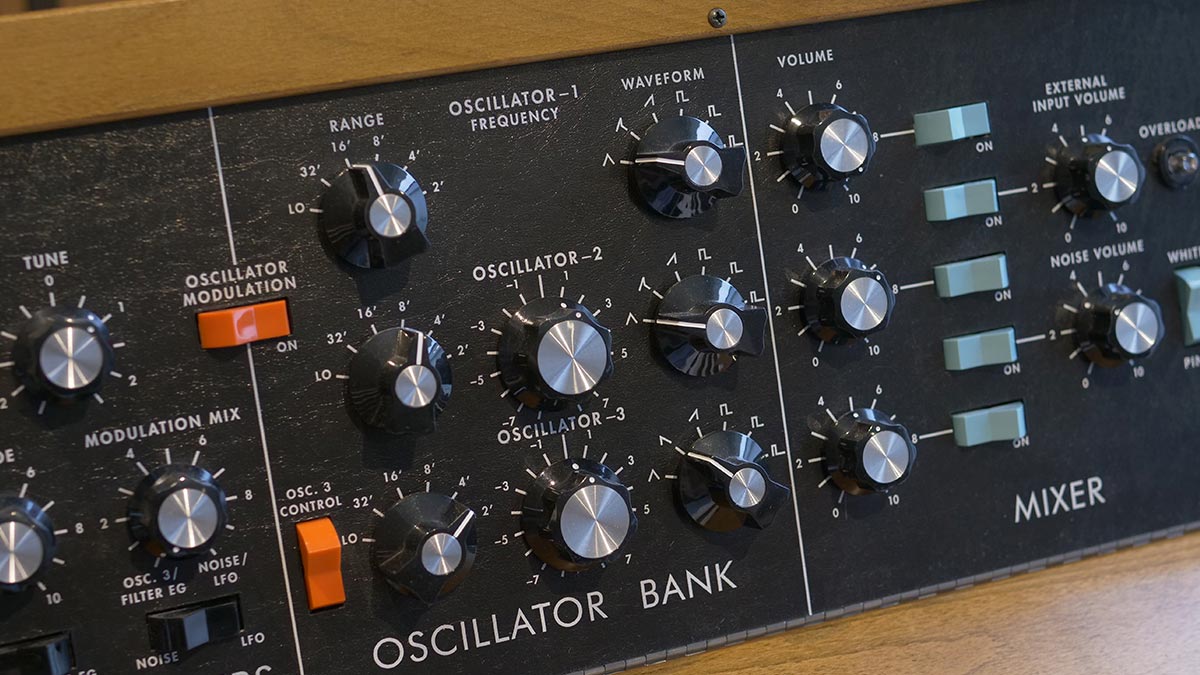In this step-by-step tutorial, we will deconstruct another 1 of the 107 presets included in the Audiotent – Nemesis (Arturia ARP 2600) preset library.
Note:
- Modulation sources are highlighted with a red circle.
- Destinations are highlighted with a green circle.
- Key points are highlighted with a blue arrow or blue square.
- Bonus tips to try out in your productions will be given in italics.
AT Sequence - Berlin is a vintage sawtooth techno sequence, making use of the onboard sequencer. The Macros can be used to quickly tweak the sound, Brightness can be used to open up the Filter, Timbre to increase Resonance and Movement to increase Sequencer Rate.
Let's start again with the basics, focussing on the Oscillators. VCO1 and VCO2 are both Sawtooth, patched into VCF Audio Inputs 2 and 3. VCO1 is set to 16’ Octave and VCO2 is an octave lower at 32’, there is also detuning of both oscillators using Fine Tune, this creates a thick sawtooth sound. There is also some Frequency Modulation, VCO1 is modulating the frequency of VCO2 via VCO2’s 4th FM Control Slider. VCO3 is not audible or used as modulation in this patch.

The VCO’s are detuned further by selecting Unison Mode in the Global Section and opening up the Vocal Detune knob.

Next, we will take a closer look at the VCF. The 24db Filter Cutoff sits around 1Khz, this can be opened up or closed using the Brightness Macro. There is a touch of Resonance, this can be increased using the Timbre Macro.

The Modwheel CV is used to also open up the Filter Cutoff as an alternative to opening up the Brightness Macro, this can be achieved using the modwheel on a midi keyboard. Depth Amount is controlled using the Control Slider above the CV Insert.

Next, we will look into how the Sequencer Model 1601 is driving the sequence starting with the patching. Quantised Out A is patched to both VCO FM Control Inputs with the Depth Sliders all the way up. This allows us to change step pitch via the Sliders on the Sequencer, the Quantised Outputs makes sure that the CV is quantised chromatically, allowing us to make pitch perfect melodic sequences.
The third patch cable from Quantised Out A to VCF Control acts as Keyboard CV, but this time it's taking the CV from Sequencer Pitch. Higher notes open the Filter Cutoff more than lower notes.

The Sequencer Speed is set to Tempo 4.0 (1/16th) via the Clock Freq Slider, Clock Freq is synced to the host DAW by selecting Midi Sync. Pitches for the sequence are inputed using just the first 8 CV Sliders, this is because we have selected 8/2 instead of 16/1, splitting the 16 steps into two 8 step sequencers. Clock Freq Speed can be adjusted via the Movement Macro.

Reset and Start/Stop are patched into AR Envelope to re-trigger VCA Volume via the AR Depth Amount in the VCA section.

Lastly, lets take a look at the FX in this patch. A subtle touch of Spring Reverb is added for depth and character. We also have some Chorus applied, again quite subtle. Delay is quite an important factor, creating extra melodic notes layering into the sequence.
Have a play around with the Delay to see what alternative grooves you can create by changing Delay Times and Feedback Amount.
It is also fun to perform with the Macros and to change the Pitch CV Sliders of the Sequencer to come up with your own sequences. This patch is a great tool for quickly creating your own sequence patches.

Sound design is a never-ending learning experience. We encourage you to reverse engineer presets that you find interesting. This will enable you to build up your synthesis techniques and apply them when developing your own sound.
This preset that we covered today is just a fraction of what is included inside the full Nemesis preset library: https://www.audiotent.com/presets/nemesis/




Leave a comment
This site is protected by hCaptcha and the hCaptcha Privacy Policy and Terms of Service apply.